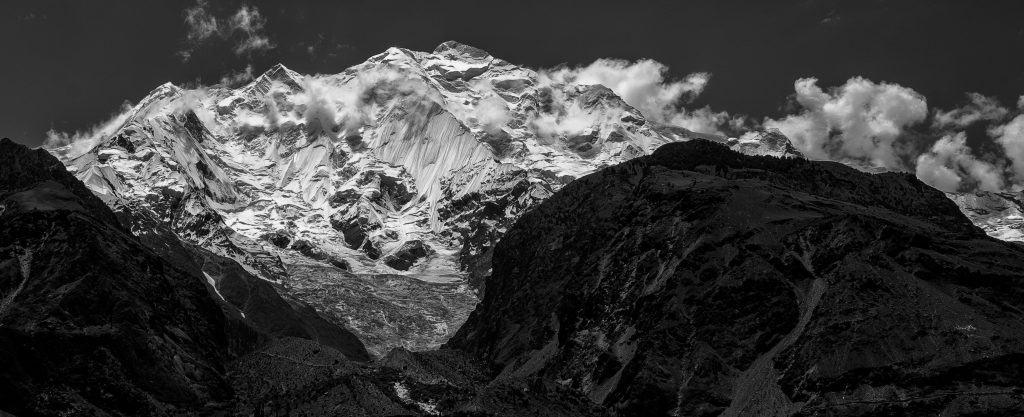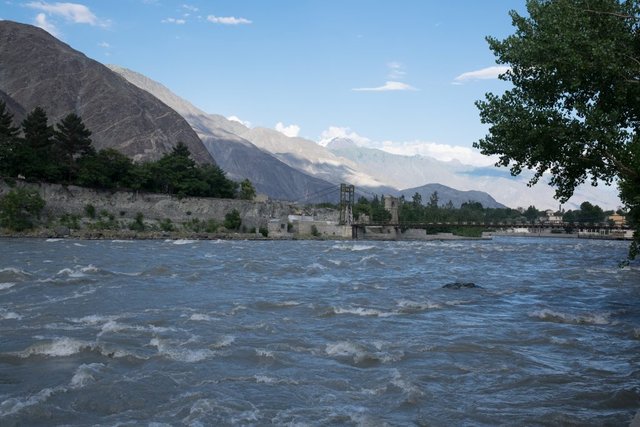Travel story:Tales from Paradise

It was a hot and humid June in Karachi. My wife had flown off to visit our children and other family in the US and Canada. I was home alone, mostly seeking refuge in an air-conditioned room and gazing at the proverbial navel. Anticipating this situation, I had wisely booked a seat for a flight from Islamabad to Gilgit. It is virtually impossible to get such a flight to Gilgit or Skardu at a short notice and a minimum two weeks advance booking is necessary. As has become my travel style lately, I booked no hotels and no return tickets.
I called up two of my former travelling buddies, Tariq (alias the mountain goat) and Jamal (alias the bureaucrat); their aliases represent their style of trekking. Both had other commitments. So it was just me, with my shadow to keep me company. But anything was better than catching brain fungus due to inactivity in hot and humid Karachi. So off I flew to Islamabad, but not before the flight was rescheduled five times over a period of 24 hours. This was not a good start.
The flights from Islamabad to Gilgit are notorious for their frequent cancellations due to poor weather conditions. So it was with great trepidation that I arrived at Islamabad airport for my flight to Gilgit. But luck was kind to me and the flight left as scheduled. The passengers were almost all families and groups of young people on vacation.
The flight to Gilgit is indeed breathtakingly beautiful. The sight of miles of snow-capped mountains and forbidding bare rocks is both majestic and awe-inspiring. The power of nature that has sculpted such terrain is indeed humbling.
The plane flew low between two peaks and landed in Gilgit at an airport cradled between the gigantic mountains that seemed a stone’s throw away. I felt my spirits rising; the heat and dust of Karachi was eons behind me. As I walked out of the plane, an armyman stepped up to me and inquired deferentially if I was General Mukhtar. I was tempted to say yes and see where it took me but I just said that alas I was not.
I walked out of the terminal looking for a taxi but failed to spot one. Then I figured out that there is no such thing as a formal taxi in Gilgit and anything that moved could be considered a taxi. So I approached a putative taxi and asked to be taken to the PTDC hotel (a friend had recommended it). The taxi man quoted Rs. 500 fare and off we went. We had not gone more than a few hundred yards when the driver informed me that our destination had arrived. Clearly, the driver had decided that I was to be taxed for arriving from the big, bad city of Karachi. At the PTDC I was lucky to get the last empty room. It was very basic but reasonably clean; the rent Rs. 4,000 a night.

Gilgit near Chinar Bagh Area
As a walked into the room after doing some quick paperwork at the reception, I was surprised to see a bottled cold drink, a bagful of cherries and another of apricots in the room. I had no idea who had put these things there. An hour later there was a loud knocking on the door. I opened it to see my taxi driver looking quite flustered and in a great hurry. Without saying a word he barged into the room, put a prayer mat on the floor and started saying his prayers. After the prayers he made himself comfortable on the bed and started a general conversation. I was quite amused by his refreshing conviviality, something I had never seen in any other place I had visited. It turned out it was he who had put the fruit and drink in the room. He asked me if I would like to hire him to go to Karimabad the next day. I did not commit and he went away. All this time he was gentle, soft spoken and never pushy; traits that I later realized were common to the all the local people I met. Coming from Karachi, it was indeed as refreshing as the fresh air of the mountains.

A peaceful village in Gilgit, a short walk from the PTDC Motel.
The most beautiful children in the world are to be found in Gilgit / Hunza!
To put is simply, there is nothing in Gilgit to keep a tourist. Yet, I did find two interesting walks. A stroll from the PTDC hotel leads to the Chinar Bagh area where the fast flowing Gilgit River and a number of suspension bridges made for a very interesting ambience. The second little walk was to a small village-like setting with green fields and a sense of peace and tranquility pervading it. Here you see friendly little children that run up to you and greet you in English! I realized how good-looking these children were. They had the best of Asian and Western features; beautiful eyes, a unique shy smile, and beautiful skin. Later, I asked my driver why are the people of Gilgit and Hunza so good-looking? “This is because of the clean mountain air and the fruit we eat,” he replied. I made a mental note to breathe deeper and eat a lot of fruit in the hope that some of the mountain beauty would rub off on me.
The next day I got a call from the taxi driver, saying that he was in Hunza but if I wanted, his brother could bring me to Hunza. By this time I had done my homework on the fares and agreed to pay Rs. 3,000 for the ride. Public transport is not good in that area and tourists have to use taxis most of the time. Travelling alone can become expensive as you sometimes have to hire an empty taxi just for yourself.



The bridges of Gilgit
The drive from from Gilgit to Karimabad in Hunza is truly beautiful. The Karakoram Highway winds through the mountains, at times barren and forbidding, at times dappled with green and at times snow-capped. We stopped at the Attabad Lake where the water is of a beautiful emerald color. The lake was formed when a mountain fell into the river during the 2010 earthquake and blocked it. There was tragic loss of life and displacement due to this transformation. Now the lake is a tourist spot and boats are available to take a tour and enjoy the serenity of the lake.
The other popular spot to take a break on the ride is the Rakaposhi Viewpoint. A number of food kiosks have been built on the two sides of a stream that emanates from the Gulmit glacier of Rakaposhi. The view point offers a spectacular, un-obstructed view of Rakaposhi that stands at an imposing 7,728 meters.
